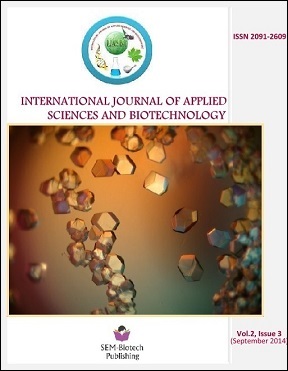Use of Computational Matrix Adjustment to Evaluate the Effectiveness of Common Influenza Vaccines against the Emergence of Drift Variants
DOI:
https://doi.org/10.3126/ijasbt.v2i3.10952Keywords:
neuraminidase protein sequence, hemagglutinin protein sequence, BLAST, H1N1 influenza, influenza BAbstract
Every year the FDA issues a recommendation for the composition of the year’s common influenza vaccine for influenzas A and B. The FDA can consistently predict the dominance of a particular strand of influenza virus by taking into account previous years’ antigenic characterization percentages. However, the sudden disappearance of dominant antigens and the sudden emergence of drift variants can disrupt this pattern, which questions the effectiveness of that year’s vaccine. Basic Local Alignment Search Tool was used to compare the protein sequences for hemagglutinin and neuraminidase between the strands in the vaccine and the dominant viral strands. This study examined the effectiveness of vaccines from 2000 to 2012, focusing on the transitions between the B/Yamagata and B/Victoria lineages and A/New Caledonia and A/California lineages (H1N1). Between the years 2005 and 2006, dominance of the B/Yamagata lineage, represented by B/Shanghai/361/2002, disappeared almost entirely. For the 2005-2006 flu season, the CDC recommended a B/Shanghai/361/2002 vaccine which expressed a 98% identity to the dominant influenza B hemagglutinin sequence and a 97% identity to the dominant neuraminidase sequence. From 2007 to 2008, the A/New Caledonia virus declined to 34% of cases while the A/Solomon Islands/3/2006 virus increased to 66%. The A/New Caledonia/20/99 vaccine effectively expressed a 97% identity to the hemagglutinin sequence of A/Solomon Islands/3/2006 strand and a 98% identity to the neuraminidase sequence. This study demonstrates that from 2000 to 2012, despite drift variants in influenza viruses, the CDC-recommended vaccine effectively matches the hemagglutinin and neuraminidase protein sequences of the dominant viruses.
DOI: http://dx.doi.org/10.3126/ijasbt.v2i3.10952
Int J Appl Sci Biotechnol, Vol. 2(3): 224-228




